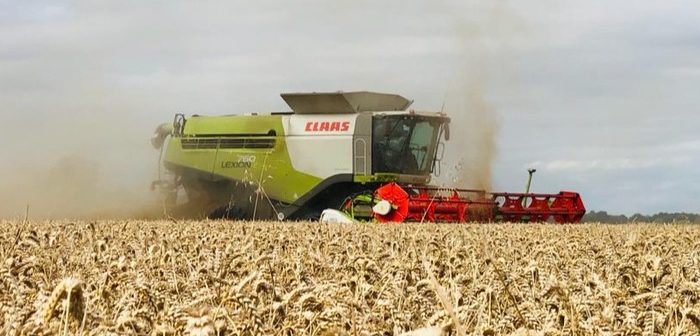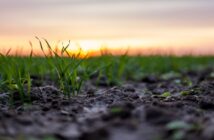The Early Bird Survey (EBS) takes place each autumn to assess national cropping intentions. It is undertaken by The Andersons Centre, with the help of the Association of Independent Crop Consultants (AICC) and other agronomists.
Please note, with UK area information yet to be published for 2022, the 2022 area data used in this release is the Defra June Survey England area, combined with the areas for Scotland, Wales and Northern Ireland from the AHDB Planting and Variety survey.
Favourable autumn conditions see rise in winter cropping
This year’s Early Bird Survey of planting intentions indicates a continuation in the rise of winter cropping for harvest 2023. These are unsurprising results, given the relatively favourable planting conditions for many growers this autumn.
The intended wheat area for harvest 2023 is forecast to be relatively unchanged (-0.1%) on the year, at 1,803Kha. Despite coming down from the record highs seen in the spring, UK feed wheat prices have remained historically high, driven by the war in Ukraine and the tight global supply picture. New crop wheat futures (Nov-23) have been creeping closer to old crop prices over the past few months, likely impacting planting decisions for 2023. While grain prices remain supported, and the planted area for harvest 2023 is expected to remain relatively static, higher fertiliser prices may impact the quality and or quantity of next year’s crop if growers apply less to mitigate some of the cost.
In 2023, the total barley area is estimated to be down by 1.7% on the year at 1.089Mha, with a drop in intended spring barley plantings outweighing a rise in winter barley planting intentions.
The winter barley area is estimated to be 4.1% higher year-on-year, at 454Kha. This is marginally higher than the area planted in 2019 (453Kha) and if realised, it would be the largest winter barley area since 2003 (455Kha). The growth in winter barley area isn’t surprising given that on average winter barley is higher yielding, and an earlier finish to harvest, as well as favourable weather conditions, have given most growers a larger autumn drilling window.
The spring barley area is forecast down 5.4% on the year at 635Kha. If realised, this would be the smallest area since 2012 (618Kha).
The area planted to oats is expected to fall for a third consecutive year. The estimated 2023 oat area sits at 162Kha, down 9.5% from 2022’s estimate (179Kha). The fall in oat area is likely down to the rise in other winter crops such as oilseed rape.
Oilseed rape on the rise?
Oilseed rape planting intentions for 2023 are pegged at 415Kha, up by 13.4% on 2022’s estimate. This is a fairly significant increase on the year, and if realised would be the second consecutive year of area growth. However, 2023’s intentions remain considerably lower than before the ban of neonicotinoids. Forward prices for rapeseed are attractive and are likely the reason for the increase in forecasted area this year. However, going forward, high input costs and the ongoing issue of cabbage stem flea beetle could cap any further gains in UK area in the future.



